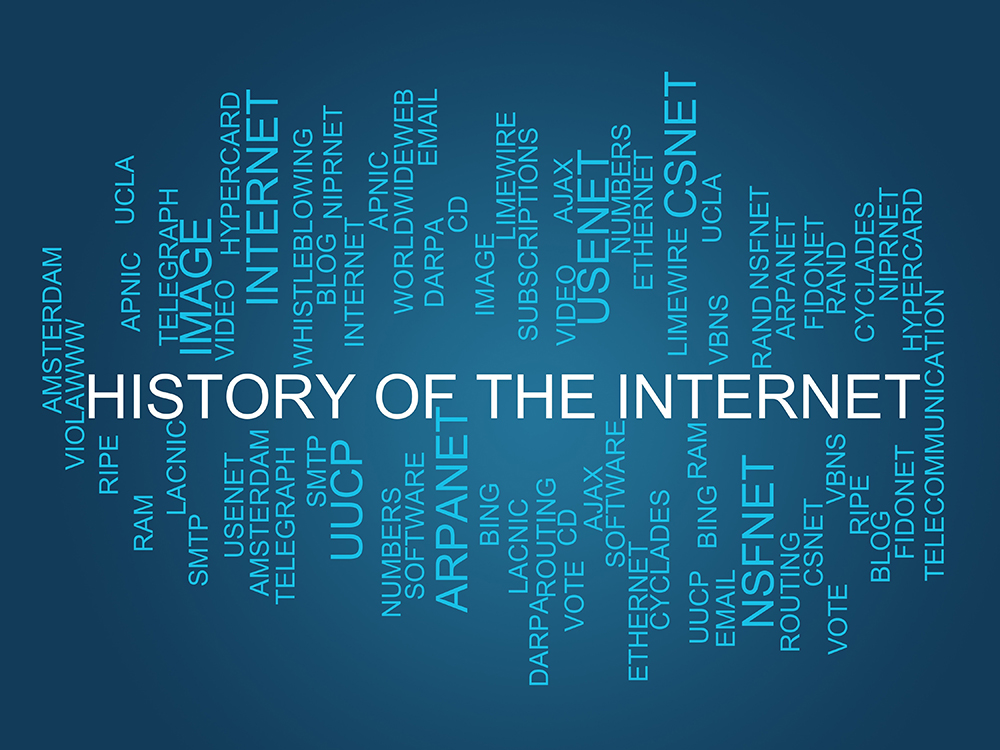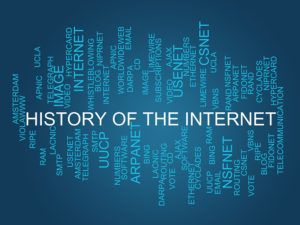
 You probably don’t think too much about where your internet comes from. If it works, it just works, and you don’t really notice it — your portal to the web is accessible and usable and it’s usability is reality: what is has always been and thus shall always be… until your cat knocks the router onto the floor and the cold brutality of reality proper slaps you hard upside the head: the internet is not a given, and one day it didn’t exist!
You probably don’t think too much about where your internet comes from. If it works, it just works, and you don’t really notice it — your portal to the web is accessible and usable and it’s usability is reality: what is has always been and thus shall always be… until your cat knocks the router onto the floor and the cold brutality of reality proper slaps you hard upside the head: the internet is not a given, and one day it didn’t exist!
Scariest. Ghost story. Ever.
Before the internet was known as “The Internet,” it went by a different name: ARPANET. Uhhhhhh… ARPA-Who? In the fledgling interweb’s defense, someone else chose that name. (It was a strange time back then: people still thought bell bottoms were cool.) Considering what the Internet has become — a technology so integral to our lives that we’ll try to pull up Twitter to complain that our internet is down, only to remember that our internet is down — it can be odd thinking about what it used to be… the aforementioned “ARPA-What?”
ARPANET is an acronym for Advanced Research Projects Agency Network. In the late 1960s, The Advanced Research Projects Agency (ARPA) and the Department of Defense set out on a mission: they were going to find a way to simplify communication and share data without using the older and slower telephone method of ‘circuit switching.’ That method was only able to transfer voice and data communications from one device to another in a linear fashion — from end to end.
Rudimentary as it was in the beginning (the late 70’s and early 80’s), ARPANET incorporated a groundbreaking mode of data transmission known as packet switching, which broke information up into multiple different parts (e.g. packets) to be sent separately along whichever network route was most efficient, eventually being reassembled at their final destination. To keep these packets from getting jumbled, a new conceptual communication model was developed to give things order. And thus, TCP/IP protocols were born. (You can probably thank Robert Kahn and Vint Cerf — aka the Father of the Internet — for that.)
What started out as a Department of Defense project quickly expanded outward to academia and beyond, and by the early 80’s a number of other government agencies were actively involved in internet research and working towards developing ARPANET’s successor. In 1986, having already supported the development of the Computer Science Network (CSNET), the National Science Foundation created a 56 kbit/s backbone in order to support the supercomputing centers that it was sponsoring. They called it NSFNET, and in a few short years it would become the backbone of the internet as we know it today.
First Commercial Use of the Internet
The first public and commercial use of the Internet came when in mid-1989 when CompuServe and MCI Mail added an email service for anyone who wanted it. It was at this same time that CERN engineer and computer scientist Tim Berners-Lee saw an opportunity. Nearly a decade prior, while working in Geneva for a few months as an independent contractor at CERN, he’d developed a failed prototype database system based on the concept of HyperText. In 1989, CERN was the largest internet node in Europe — and that’s when it struck him: what if someone were to join hypertext and the internet?
“I just had to take the hypertext idea and connect it to the Transmission Control Protocol and domain name system ideas and—ta-da!—the World Wide Web … Creating the web was really an act of desperation, because the situation without it was very difficult when I was working at CERN later. Most of the technology involved in the web, like the hypertext, like the internet, multifont text objects, had all been designed already. I just had to put them together. It was a step of generalising, going to a higher level of abstraction, thinking about all the documentation systems out there as being possibly part of a larger imaginary documentation system.”
—Tim Berners-Lee
The internet as we know it had been born, and on August 6, 1991, the world’s very first website went live.
Nothing would ever be the same.
The Internet Has Changed the Way We Do Business Forever
Before the Internet, businesses were using fax machines, FedEx, and snail mail (USPS). They also had access data transfer with Alpha Pager, but what could be sent was limited: very brief text messages to which you could only answer Y or N. It was a simpler time — the worst annoyance a business might have to contend with was Junk Fax advertising. Little did they know, the future of SPAM was going to make them really nostalgic.
So quickly did the The Internet speed up the flow of information and the pace that we conduct business that 1999, Bill Gates wrote a book: Business @ The Speed of Thought. Of course, by the mid-1990s nearly every legitimate business, big or small, either had or was building a website. Why not have an online brochure available 24/7 without having to print and mail out information to potential customers? The printing industry was the first to suffer — across the nation print shops were going out of business — and it wouldn’t be the last.
The Major Evolutionary Shifts of Commercial Internet Use
Every single facet of our lives changed with the advent of the Internet, but nowhere is this shift seen more dramatically than in the business world. Between 1990 to 2000, no one was safe from the digital revolution. It was a chaotic time, yet one that came with significant opportunity. That’s how it’s always been, though, isn’t it? From the dawn of man to the dawn of cat memes, there has always opportunity in change; of course the internet would be no different.
These paradigmatic shifts have not been few, and the list is ever-growing. Just think of what we’ve already witnessed:.
- Commercial e-mail has become the preferred method of written communication.
- Companies of every shape, flavor, and size now have websites. No longer is the pond ruled solely by the big fish — it’s a level playing field for all after the great web equalizer.
- Interactive websites allow businesses to connect with their customers 24/7/365 throughout every corner of the globe.
- Industry portal websites have sprung up packed with knowledge relevant to every sector of our economy.
- Search Engine competition rapidly evolved to serve the instant-info needs of the global consumer.
- Bulletin Boards, then Blogs, brought two-way, open and transparent information for business communication.
- Social Networks exploded, providing customers and companies with even more ways to communicate and connect.
- The whole wide world went mobile with smartphones — and when the Internet followed, the rest was history.
Today, the entirety of modern humanity’s collective knowledge exists right at your fingertips: where you are, whenever you want it, it’s out there waiting for you.
What’s the next big evolution for business computing?
Are you sitting down? We only ask because what’s on the horizon for business computing isn’t just big: it’s earth-shattering. One of the greatest technical evolutions of modern history is just around the corner. Consider if you will The Internet of Things (IoT), Big Data, and AI… all connected in real time to the cloud — and all of that secure data and information will be available to anyone anywhere on any mobile device.
Imagine running a factory, supply chain, construction project, hospital, university, financial institution, or multiple retail locations, and having the exact pertinent information you need instantaneously. Imagine all of your technologies — integrated, systematized, and optimally configured for maximum efficiency — on any job site, at any office location, providing the ‘need to know’ information relevant to each of your team members… in real-time.
From a business perspective, the Internet is about to get one hundred times more useful… but only if you embrace the change, and take advantage of all the opportunities that lie in wait.
Are you ready?
Contact JNT TEK today for ways to better utilize your company’s technology.




CONNECT WITH US!